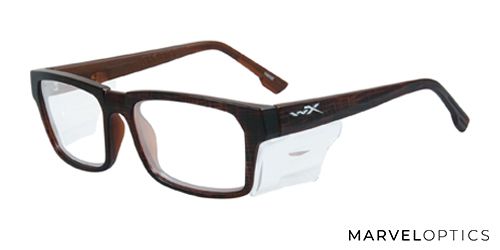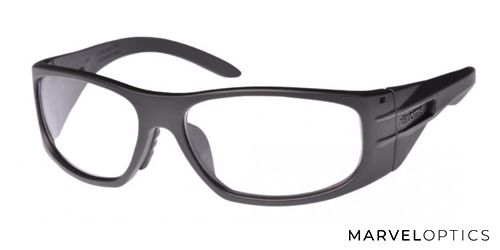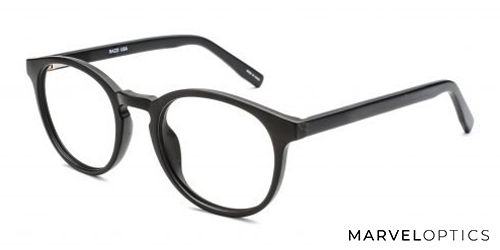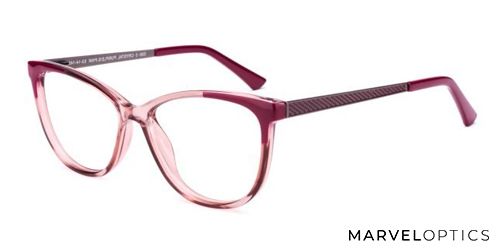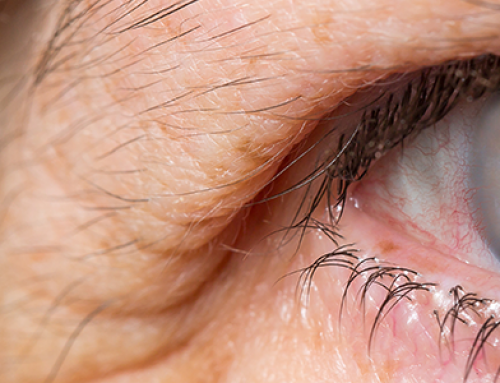While you may not think there is much that goes into making a pair of prescription eyeglasses, the crafting process is more complex than you’d imagine. Modern glasses are customized to the wearer’s needs and are capable of being able to accommodate a wide variety of prescription needs. If you’re curious about the process used to design eyeglasses or you are trying to better understand how to choose glasses that best fit your style and lifestyle, this guide explains how prescription glasses are manufactured.
The Components of Prescription Eyeglasses
Understanding the different parts of eyeglasses can help you choose a pair that is the most comfortable, stylish, and functional for your needs. While the main components of every pair of glasses include the frame and the lenses, you can break these categories down even further.

Frames
Eyeglass frames serve the main function of holding the lenses in place and staying secured on the wearer’s head. The front section of the frame includes the rims which surround and hold each lens. A bridge piece connects both lenses to each other, and the end pieces on each outer section of the rims allow the front of the frame to be attached to the arms, or temples, with hinges. The temples of glasses can be made in varying lengths, and they include an angled tip to keep them from falling off.
Frame Materials
There are many different types of materials used to make the frames on prescription eyeglasses, which vary in durability, flexibility, and affordability. While metals and plastics are most often used for glasses frames, there are some less common materials that may be used, such as wood. Several of the most widely used metal frame types include:
- Nylon: A durable, lightweight plastic frame material often used for safety glasses or sports frames.
- Aluminum: A popular metal used for its minimal weight and anti-corrosion properties.
- Titanium: A pricier alternative to aluminum, titanium glasses are also lightweight, resistant to corrosion, and incredibly flexible.
- Stainless Steel: These glasses are made from a combination of metals including manganese, chromium, and nickel. They are an affordable option for metal frames while remaining durable and lightweight. However, some people have an allergy to nickel or chromates.
- Flexon: Made from a blend of titanium and nickel, Flexon frames boast incredibly flexibility and have the ability to maintain their shape when bent.
- Cellulose Acetate: Affordable and customizable, acetate glasses are made from plant-based, hypoallergenic plastic. This material can be made in almost any color combination, with varying levels of transparency and finishes.
Frame Styles
Frames are available in a variety of shapes and styles, which are designed to meet a variety of tastes and complement different face shapes. Rectangular and oval frames are among the most popular, but round, square, cat-eye, browline, and aviator are other common types of frames. Some people also purchase large, oversized glasses. Different styles of glasses may include minimalist rimless designs, bold frames, or a combination of the two.
Lenses
Eyeglasses lenses are designed to fit the size and shape of the frames they come with. While lenses were first made out of glass, there are now used far less often. Instead, plastic lenses are the most widely used as they are less likely to break and cause eye injuries. Columbia Resin 39, or CR-39, is a common, affordable material often used for eyeglass lenses. High-index plastic lenses are a thinner, lighter option that has come out more recently due to popular demand. Polycarbonate lenses are incredibly strong, scratch-resistant, and UV resistant. The same material used for military-grade helmet visors, this material is used to make safety and sports glasses due to its impact-resistance and general durability.
The Manufacturing Process
The first step when making a pair of eyeglasses is to make the frame. While the process varies depending on the materials used, die-cutting is a common way frames are manufactured after a certain style is designed. A variety of steps are taken to cut and smooth the material into the final product, including riveting, curving, and polishing. The temples and other pieces of the frames must be assembled and completed before the lens can be placed.
When making lenses, both human interaction and machinery are used to ensure precision and quality. The lenses must first be measured and shaped to match the frames. A block of plastic is then selected and cut to fit these measurements. For glasses that require prescription lenses, this information is entered into a computer system, which is used to curve and cut the lenses to the appropriate thickness to accommodate the prescription. The lenses are then polished, engraved, and inspected to ensure they meet quality expectations. Next, any tints or coatings are applied before the lenses are heated or chemically-treated to easily insert into the frames.
Now that you understand how prescription eyeglasses are made and what different frames and lens options are available, you can choose a pair that best fits your needs. Search our inventory for frames that you like, enter your prescription and lens options, and we’ll take care of the rest!
Best Prescription Glasses
WileyX Profile
The WileyX WorkSight series of frames includes prescription-ready safety glasses. The Profile style has rectangular frames with full rims. Triloid frames and polycarbonate lenses meet the American National Standards Institute Z87.1-2010 high velocity and mass impact requirements and U.S. federal Occupational Safety and Health Administration 1910.133(b)(1)(1) standards. These glasses come with a fold-over case, removable side shields and a drawstring storage pouch.
Profile frames may be available in several color choices such as Gloss Brown Demi, Gloss Green Demi, Matte Hickory Brown, and Matte Black. This eyewear can accommodate single vision, bifocal and progressive lenses. Check the frame size and dimensions to determine whether Wiley X Profile can provide the best fit for daily, occupational or activewear.
ArmourX 6001
Another popular frame style ready for prescription lenses is ArmourX 6001. These plastic glasses with polycarbonate lenses meet ANSI Z87.1 safety standards. Large black rectangle frames wrap around the wearer’s face. While these glasses are compatible with single vision, bifocal or progressive lenses, the base curve may not be the best choice for high Rx lenses.
The 6001 style frames from ArmourX are suitable for on-the-job or activewear. A lightweight frame design is paired with lenses treated to resist dust, fog, reflections and scratches. When fitted with clear or tinted lenses, this eyewear provides protection from ultraviolet rays. This style is popular because it is comfortable and stylish enough to wear inside and outside while doing a wide range of activities.
Shellshore
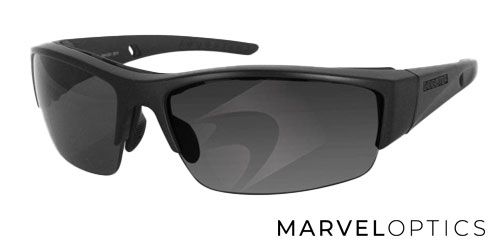
A double bridge distinguishes Shellshore by Marvel Optics apart from other metal rectangular frames. This small feature draws attention upward toward the browline, which can be helpful for balancing the features of a round, oval, triangle or diamond-shaped face and adding an element of style. These full-rim glasses come in a small size and accommodate single vision lenses.
Rectangle-shaped frames with a double bridge are ideal for oval and oblong face shapes. Check the measurements of these frames to determine whether Shellshore is the right safety prescription glasses style for you. These frames may be available in colors such as blue, gunmetal or jet black.
M-Line Brave
Brave frames by M-Line have on-trend vintage styling at an affordable price. These round acetate full-rim glasses have spring hinges. Some versions combine black frame fronts and colored temples. Single vision, bifocal and progressive lenses can all be fitted into these frames, as can high Rx prescriptions. An anti-scratch coating maintains optical clarity for comfortable wear and value.
Check the dimensions of Brave frames to determine whether this style is the best choice for your face. Men and women can both sport this retro style. Choose from several shades such as matte black with navy temples, matte black with red temples and matte black. You can also customize this style with clear or tinted lenses.
Katelyn
One of the most popular prescription frame styles for women is Katelyn by Marvel Optics. These cat-eye full-rim frames are another vintage style updated for modern wear. Plastic frame fronts and temples feature textural details for a unique look. The best online prescription glasses for women are compatible with single vision, bifocal, progressive lenses and high Rx prescriptions.
If you have an oval or pear-shaped face, you may want to consider Katelyn frames. These glasses can be fitted with clear or tinted lenses with an anti-scratch coating for vision correction or sun protection. These glasses come in a medium size. Check the dimensions of this eyewear to determine whether it will provide the best fit. Marvel Optics makes more prescription-ready styles for women.


